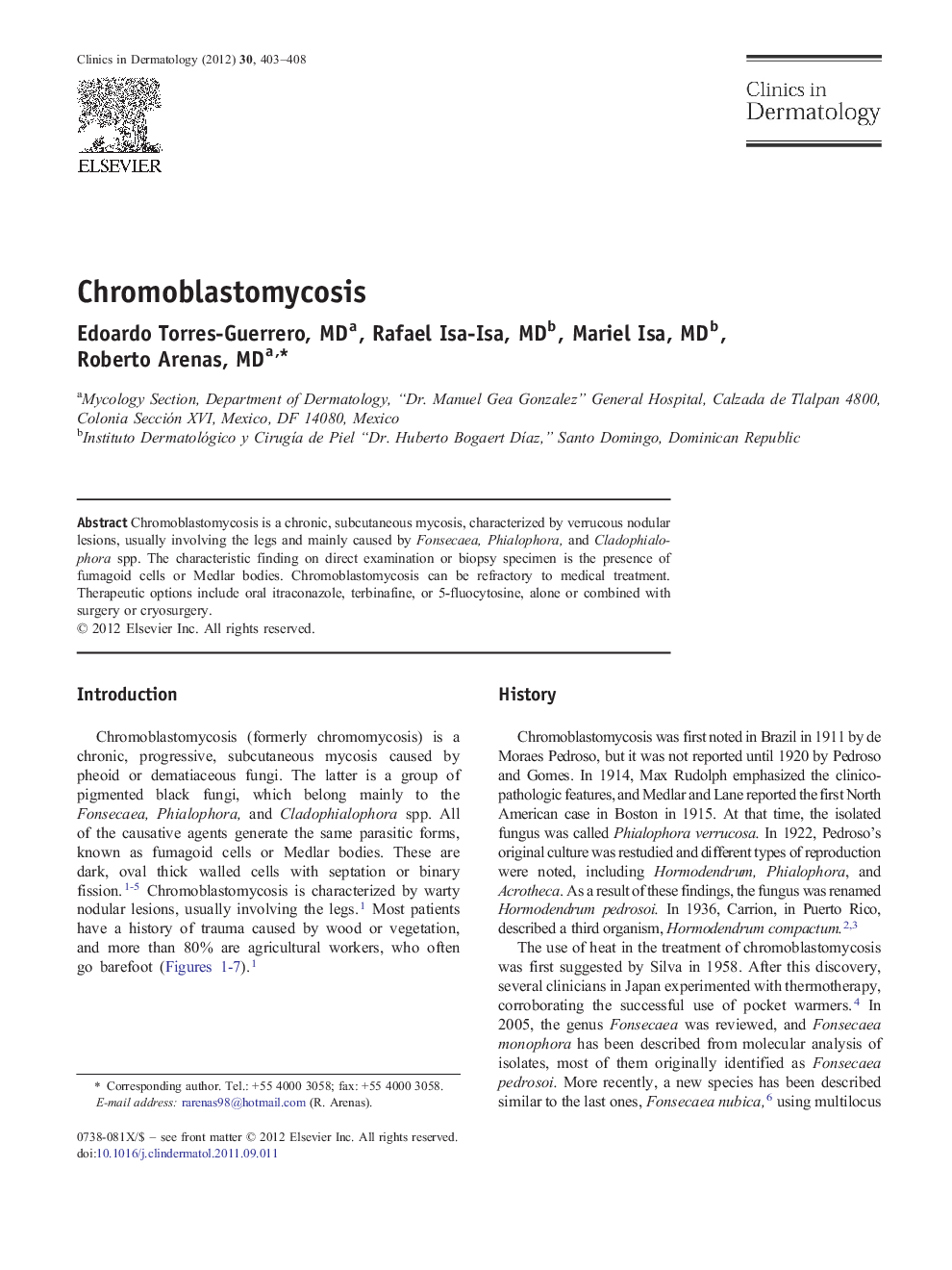| Article ID | Journal | Published Year | Pages | File Type |
|---|---|---|---|---|
| 3194539 | Clinics in Dermatology | 2012 | 6 Pages |
Abstract
Chromoblastomycosis is a chronic, subcutaneous mycosis, characterized by verrucous nodular lesions, usually involving the legs and mainly caused by Fonsecaea, Phialophora, and Cladophialophora spp. The characteristic finding on direct examination or biopsy specimen is the presence of fumagoid cells or Medlar bodies. Chromoblastomycosis can be refractory to medical treatment. Therapeutic options include oral itraconazole, terbinafine, or 5-fluocytosine, alone or combined with surgery or cryosurgery.
Related Topics
Health Sciences
Medicine and Dentistry
Dermatology
Authors
Edoardo Torres-Guerrero, Rafael Isa-Isa, Mariel Isa, Roberto Arenas,
